A Closer Look at the Present—and Future—of the ABR Exam
Evolving exam format emphasizes the value of adaptability in radiology
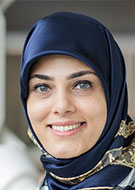
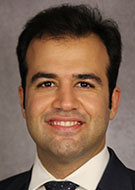
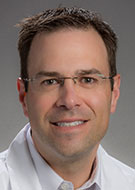
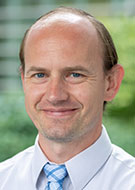
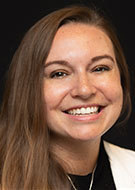
In 2012, the American Board of Radiology (ABR) shifted its board exam from a traditional oral exam to a computer-based format.
The exam, containing image-rich, multiple-choice questions, replaced the traditional single board exam with two separate exams: the Core exam which focuses on foundational diagnostic knowledge, and the Certifying exam, which assesses clinical judgement and decision-making.
The Certifying exam in diagnostic radiology (DR) will revert to an oral format in 2028. However, there will be a notable difference: the oral exams will be administered remotely via a one-on-one video conference.
Here’s how some trainees and program directors view the current exam format, and how they feel about the new oral format on the horizon.
The Resident Perspective
Farzaneh Rahmani, MD, MPH, plans to take the Core exam in 2026 and the Certifying exam in 2027. She is a research-track diagnostic radiology resident at Mallinckrodt Institute of Radiology at Washington University Medical Center in St. Louis.
“The truth is that patients and their images don’t come with neatly defined multiple-choice questions,” Dr. Rahmani said, referring to the current exam format.
Dr. Rahmani supports the oral exam returning in 2028. She noted that one of the major benefits of an oral exam is its emphasis on the ability to communicate findings and thought processes clearly to fellow radiologists and other clinicians.
“With the growing use of artificial intelligence in radiology, these communication skills are becoming more important than ever,” Dr. Rahmani said.
Omid Shafaat, MD, is a PGY-4 integrated interventional radiology resident at the University of Alabama at Birmingham. With training that encompasses both DR and IR, Dr. Shafaat plans to take the oral Certifying exam in 2028, which will make him part of the first cohort under the new oral exam format.
Dr. Shafaat said the computer-based Core and Certifying exams have improved standardization, but they don’t fully capture the clinical reasoning and communication skills required in real-world radiology.
“Whether you're interpreting images in DR or managing procedures in IR, the ability to think critically, explain decisions and adapt in real time is essential,” he said. “The return of an oral exam feels like a step toward better preparing residents for clinical autonomy.”
There is a positive atmosphere and strong sense of preparedness regarding the Core and Certifying exam at her institution, Dr. Rahmani noted.
“We have at least two case-based conferences each day—one in the morning and one at noon—where residents present cases orally and practice applying their clinical judgment,” Dr. Rahmani said. “This consistent, interactive format helps build both confidence and competence over time.”
Dr. Shafaat noted that IR residents must prepare for both diagnostic interpretation and procedural planning.
“The Core exam dominates resident preparation, with heavy use of question banks, physics modules and structured multiple-choice questions study plans,” he said, noting that the Certifying exam does not inspire the same level of intensive preparation.
“For those of us whose training encompasses DR and IR, the oral component already includes real-world patient management and image-guided scenarios, which align well with daily practice,” he said. “But even for DR-only trainees, the new oral exam offers an opportunity to assess critical thinking and synthesis in a way that multiple-choice exams simply can’t.”
“The new exam uses video conferencing, structured scoring rubrics and live case discussions that focus on higher-order skills like differential diagnosis, management decisions and communication,” Dr. Shafaat added. “I also appreciate the option for conditional retakes if one section is not passed.”
“Whether you're interpreting images in DR or managing procedures in IR, the ability to think critically, explain decisions and adapt in real time is essential. The return of an oral exam feels like a step toward better preparing residents for clinical autonomy.”
— OMID SHAFAAT, MD
Thoughts from Program Directors
Questions about whether the modern training environment has left residents underprepared for independent practice have surfaced in recent years. However, many educators believe this perception is misguided.
Matthew Kogut, MD, an associate professor of radiology and program director of IR residencies at the University of Washington in Seattle, said he believes today’s residents reflect the experiences of training in today’s educational and medical environment.
“Residents today face different challenges that are not only related to the changes brought by the pandemic but also to technical advancements such as AI that have affected the practice of radiology more than other medical specialties,” he said.
Separating the Core and Certifying exams has allowed for a more staged assessment and has enabled a reemphasis on the assessment of real-time reasoning and clinical synthesis at the oral exam, Dr. Kogut said.
“Balancing test preparation with cultivating the hands-on, clinical and consultative skills that define excellent radiologists can be very challenging,” he said. “I believe all programs do their best to juggle that responsibility. I haven’t been given a sense that our trainees feel underprepared.”
Cody Schwartz, MD, echoed Dr. Kogut’s opinion about the importance of adapting to change. Dr. Schwartz is program director and vice chair of education in the Department of Radiology at the University of North Carolina School of Medicine in Chapel Hill.
“Do we want the ‘same’ radiologist that we had coming out of training 20 years ago?”, he asked. “We will only move forward if we embrace change.”
“I think the changes we see are more a reflection of our time and a national and global cultural shift,” Dr. Schwartz said. “It is our duty and calling as educators to train our future colleagues. If we are concerned about their training, we need to do some introspection and ask ourselves why.”
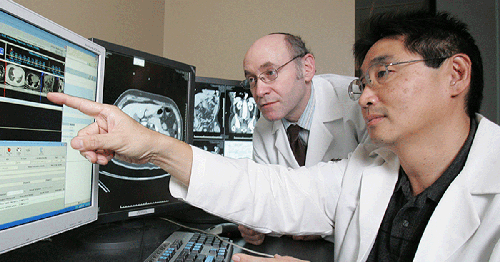
The skills and abilities of residents remain strong, according to Erin Gomez, MD, assistant professor of radiology and program director of the diagnostic radiology and molecular imaging residencies at the Johns Hopkins Hospital in Baltimore.
While Drs. Kogut and Schwartz emphasized broad shifts in culture and expectations, Dr. Gomez pointed out that some of the perceptions of under-preparedness may be linked to changes in how competencies are assessed and demonstrated in early practice.
“Some of the most gifted radiologists I have met in recent years are trainees or recent graduates,” she said. “The perception of this generation of radiologists by those currently in practice may be influenced by this generation's prioritization of wellness and self-care, which may be perceived as a lack of investment.”
Some of these perceptions have likely been exacerbated by the pandemic, which led to social isolation and an altered training experience for a 'micro-generation' of residents, Dr. Gomez added.
Several radiology residency programs across the country shifted to a more traditional didactic style of remote lecture during the pandemic, creating a culture that may be challenging to adjust. The return of the oral boards may serve as an impetus for restructuring some residency curricula and lecture formats to emphasize interactive, case-based learning.
“The shift from oral board exams to more traditionally scored multiple-choice and then pass/fail exams for the radiology boards has made it more challenging to assess some of the skills that often come to mind when one thinks of a truly great radiologist,” she said.
According to Dr. Gomez, these skills include the ability to accurately identify both critical findings and their urgency, command of the language when reporting and discussing imaging studies, and the ability to have meaningful interactions with patients and referring clinicians.
“The majority of these skills are best observed at the workstation during a busy shift, when residents have the opportunity to shine,” she added.
“The shift from oral board exams to more traditionally scored multiple-choice and then pass/fail exams for the radiology boards has made it more challenging to assess some of the skills that often come to mind when one thinks of a truly great radiologist.”
— ERIN GOMEZ, MD
The Oral Exam
The ABR’s decision to bring back the oral format while modernizing the way the exam is taken shows that it’s listening to educators and trainees, Dr. Shafaat noted.
“The emphasis on fairness, structured scoring and practical assessment is welcome,” Dr. Shafaat said. “For those of us training in IR/DR pathways, this evolution feels like it better matches the complexity of our work and will help shape more confident, clinically capable radiologists.”
Dr. Rahmani believes that the separation of the traditional board exam into the Core and Certifying exams reflected increased digitization in the field, while simultaneously streamlining the extensive logistics associated with traditional oral boards.
Bringing back oral boards with a new remote format represents a welcome blend of both approaches, she asserted.
As Drs. Rahmani and Shafaat noted, the return to an oral format could help re-emphasize clinical reasoning, communication and the ability to synthesize findings under pressure—skills critical for daily practice but less easily assessed by more standardized tests. According to Dr. Kogut, it also creates opportunities for direct mentorship and formative feedback during exam preparation.
“Both diagnostic and interventional radiologists will be affected,” he said. “Interventional radiologists will be required to take two oral certifying exams; however, the finer details are still emerging.”
Radiology remains a vibrant and essential specialty, at the forefront of innovation in medicine, Dr. Kogut added. “Successful diagnostic and interventional radiologists must continue to learn and adapt throughout their careers. Residency and board exam preparation are parts of shaping a well-rounded radiologist,” he concluded.
For More Information
Access RSNA resident educational opportunities.
Read previous RSNA News stories about resident education:
Prepare for 2028 ABR Changes with the NEW! Educator Course
Advance your program's success with RSNA Beyond the Boards: Innovative Approaches for Today's Radiology Educator.
Designed specifically for program directors and radiology educators, this new self-directed course will help you prepare confident, competent and successful clinicians.
Check out the RSNA Course Catalog on Oct. 30 for the initial course release.